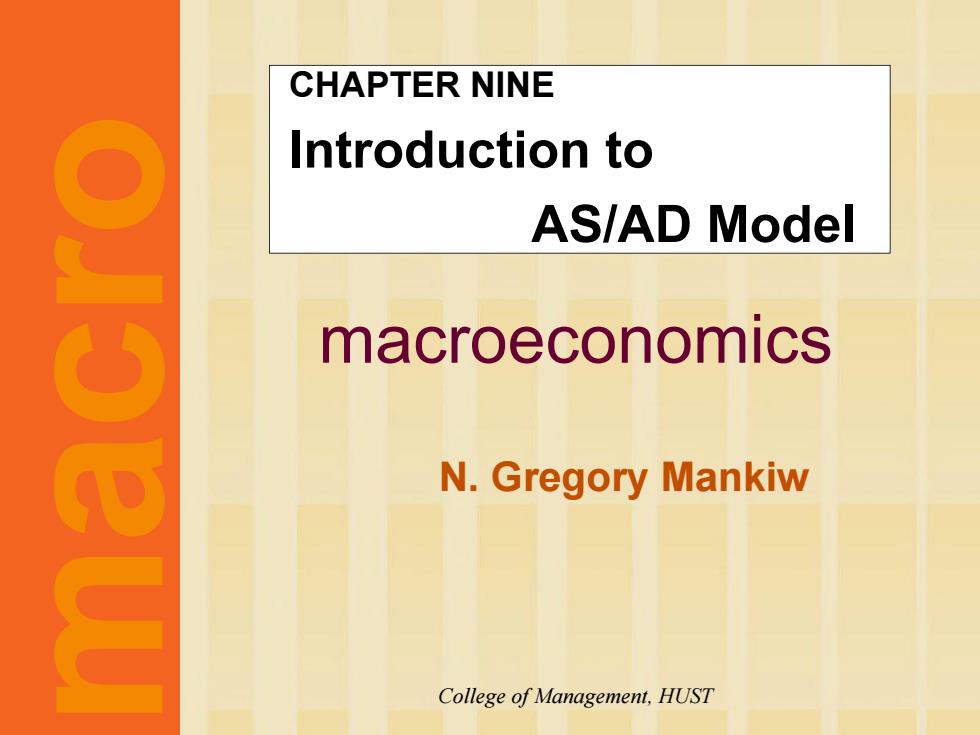
CHAPTER NINE Introduction to AS/AD Model ooeu macroeconomics N.Gregory Mankiw College of Management,HUST
macroeconomics N. Gregory Mankiw CHAPTER NINE Introduction to AS/AD Model m a c r o College of Management, HUST

Chapter objectives Difference between short run long run Introduction to aggregate demand Aggregate supply in the short run long run See how model of aggregate supply and demand can be used to analyze short-run and long-run effects of "shocks" CHAPTER 9 Introduction to Economic Fluctuations slide 1
slide 1 § Difference between short run & long run § Introduction to aggregate demand § Aggregate supply in the short run & long run § See how model of aggregate supply and demand can be used to analyze short-run and long-run effects of “shocks
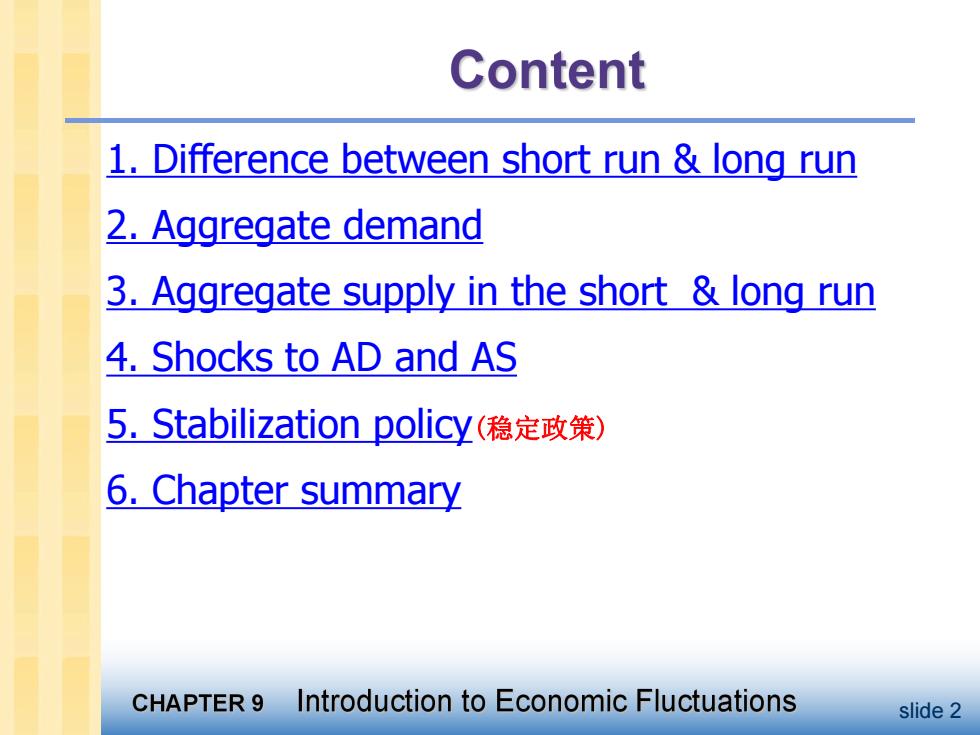
Content 1.Difference between short run long run 2.Aggregate demand 3.Aggregate supply in the short long run 4.Shocks to AD and AS 5.Stabilization policy(稳定政策) 6.Chapter summary CHAPTER 9 Introduction to Economic Fluctuations slide 2
slide 2 1. Difference between short run & long run 2. Aggregate demand 3. Aggregate supply in the short & long run 4. Shocks to AD and AS 5. Stabilization policy(稳定政策) 6. Chapter summary
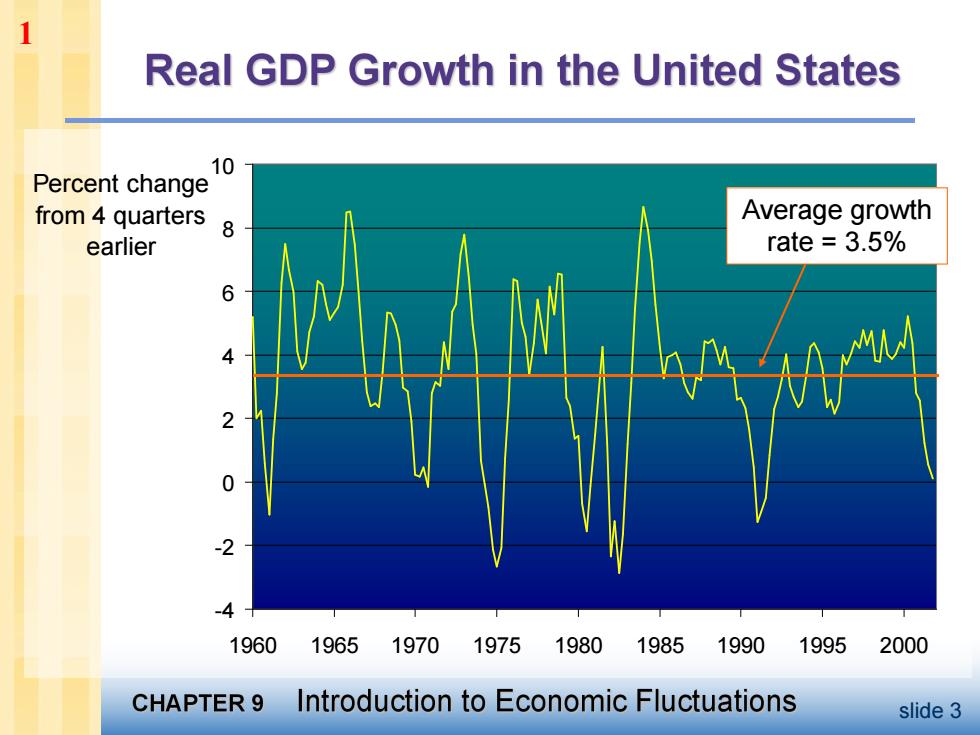
1 Real GDP Growth in the United States 10 Percent change from 4 quarters Average growth earlier rate 3.5% 6 -4 1960 1965 1970197519801985 19901995 2000 CHAPTER 9 Introduction to Economic Fluctuations slide 3
slide 3 -4 -2 0 2 4 6 8 10 1960 1965 1970 1975 1980 1985 1990 1995 2000 Percent change from 4 quarters earlier Average growth rate = 3.5% 1
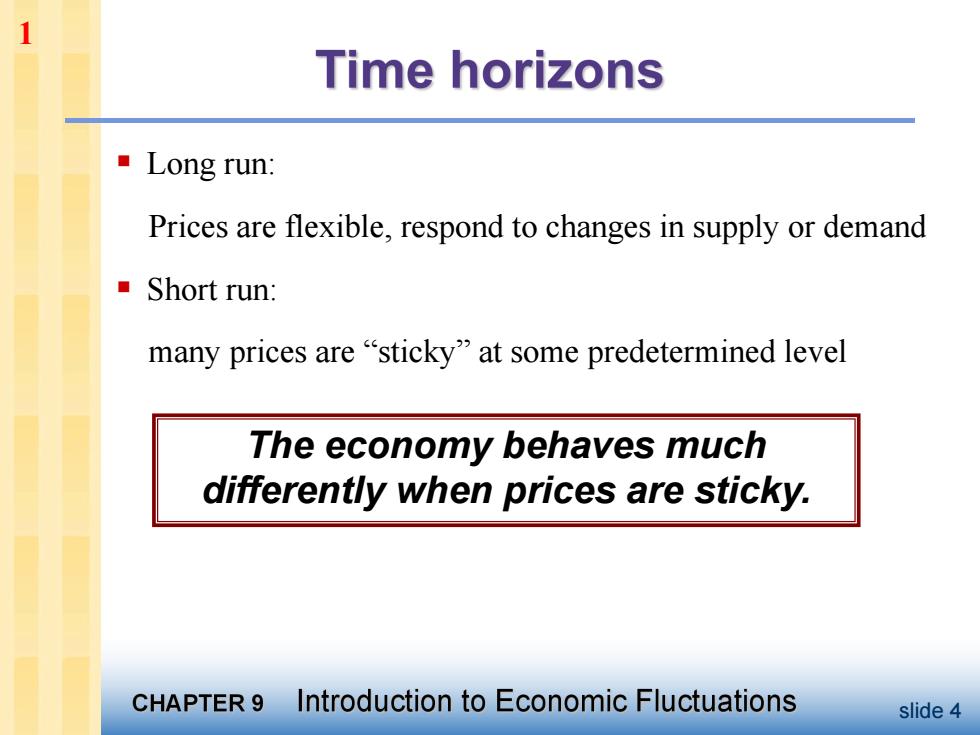
1 Time horizons ■Long run: Prices are flexible,respond to changes in supply or demand ■Short run: many prices are"sticky"at some predetermined level The economy behaves much differently when prices are sticky. CHAPTER 9 Introduction to Economic Fluctuations slide 4
slide 4 § Long run: Prices are flexible, respond to changes in supply or demand § Short run: many prices are “sticky” at some predetermined level The economy behaves much differently when prices are sticky. 1
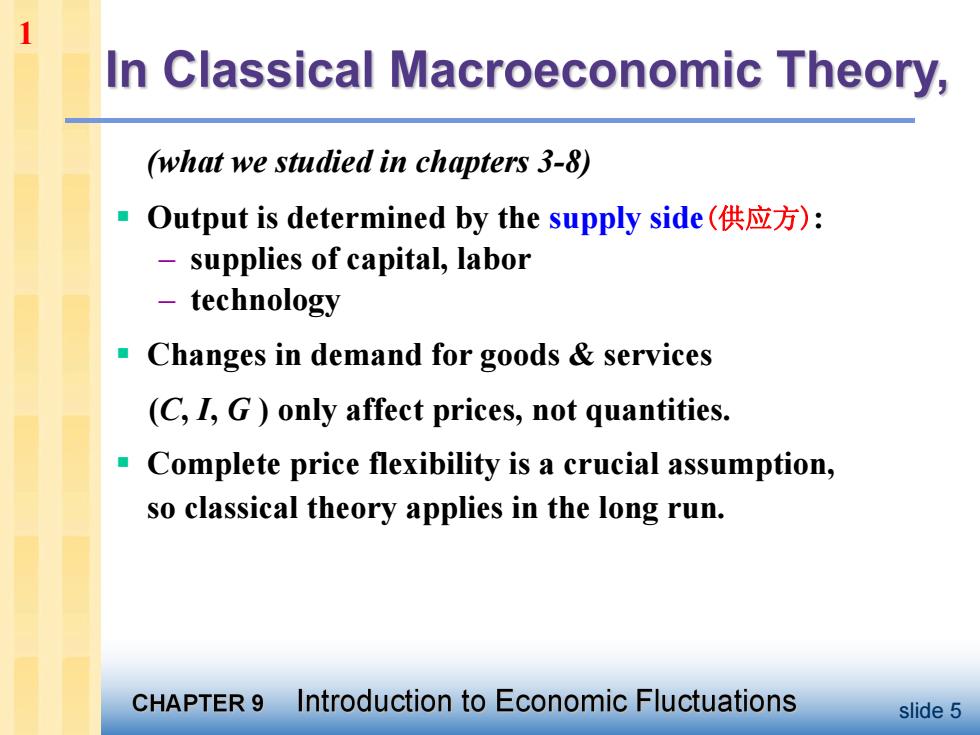
1 In Classical Macroeconomic Theory, (what we studied in chapters 3-8) Output is determined by the supply side(供应方): supplies of capital,labor technology Changes in demand for goods services (C,I,G)only affect prices,not quantities. Complete price flexibility is a crucial assumption, so classical theory applies in the long run. CHAPTER 9 Introduction to Economic Fluctuations slide 5
slide 5 (what we studied in chapters 3-8) § Output is determined by the supply side(供应方): – supplies of capital, labor – technology § Changes in demand for goods & services (C, I, G ) only affect prices, not quantities. § Complete price flexibility is a crucial assumption, so classical theory applies in the long run. 1
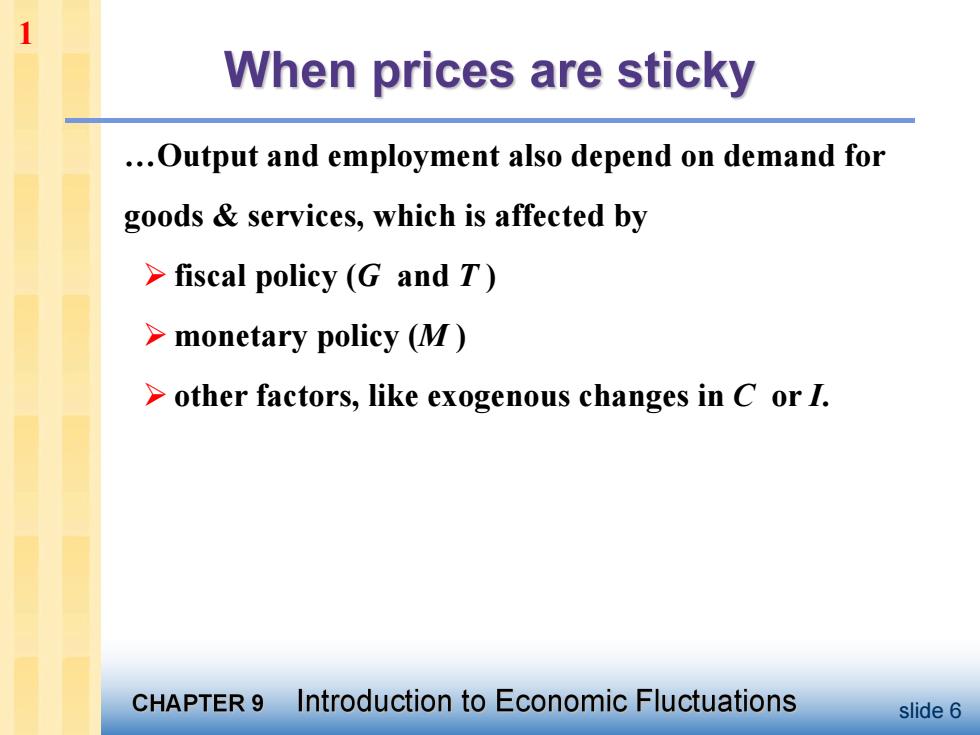
1 When prices are sticky .Output and employment also depend on demand for goods services,which is affected by fiscal policy(G and T) monetary policy (M) >other factors,like exogenous changes in C or I. CHAPTER 9 Introduction to Economic Fluctuations slide 6
slide 6 .Output and employment also depend on demand for goods & services, which is affected by Ø fiscal policy (G and T ) Ø monetary policy (M ) Ø other factors, like exogenous changes in C or I. 1
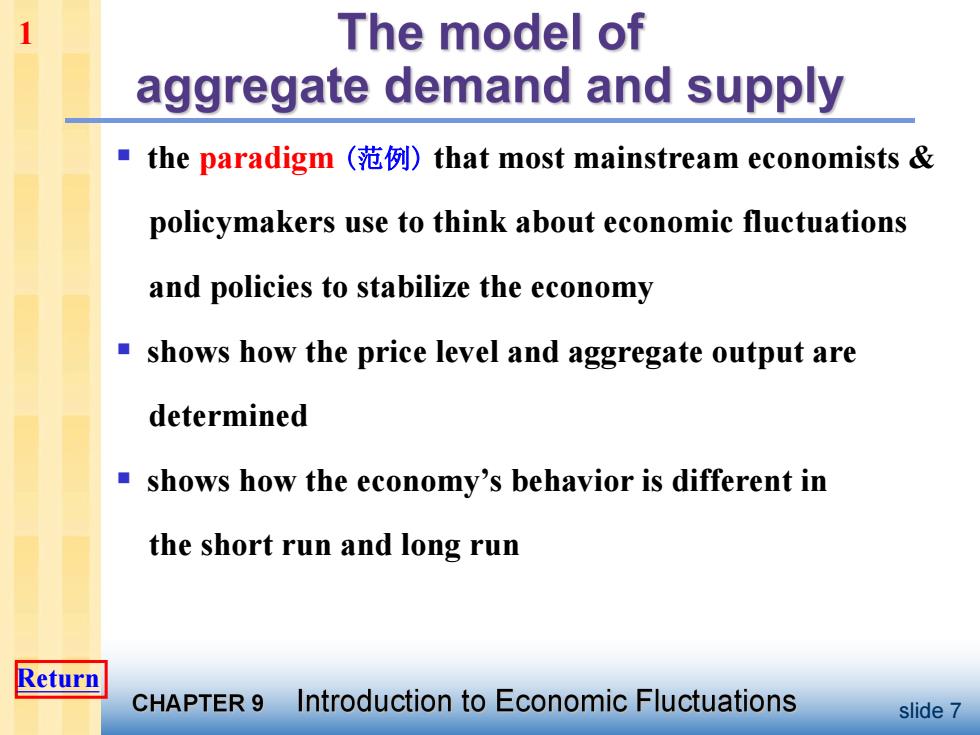
1 The model of aggregate demand and supply ■the paradigm(范例)that most mainstream economists& policymakers use to think about economic fluctuations and policies to stabilize the economy shows how the price level and aggregate output are determined shows how the economy's behavior is different in the short run and long run Return CHAPTER 9 Introduction to Economic Fluctuations slide 7
slide 7 § the paradigm (范例) that most mainstream economists & policymakers use to think about economic fluctuations and policies to stabilize the economy § shows how the price level and aggregate output are determined § shows how the economy’s behavior is different in the short run and long run 1 Return
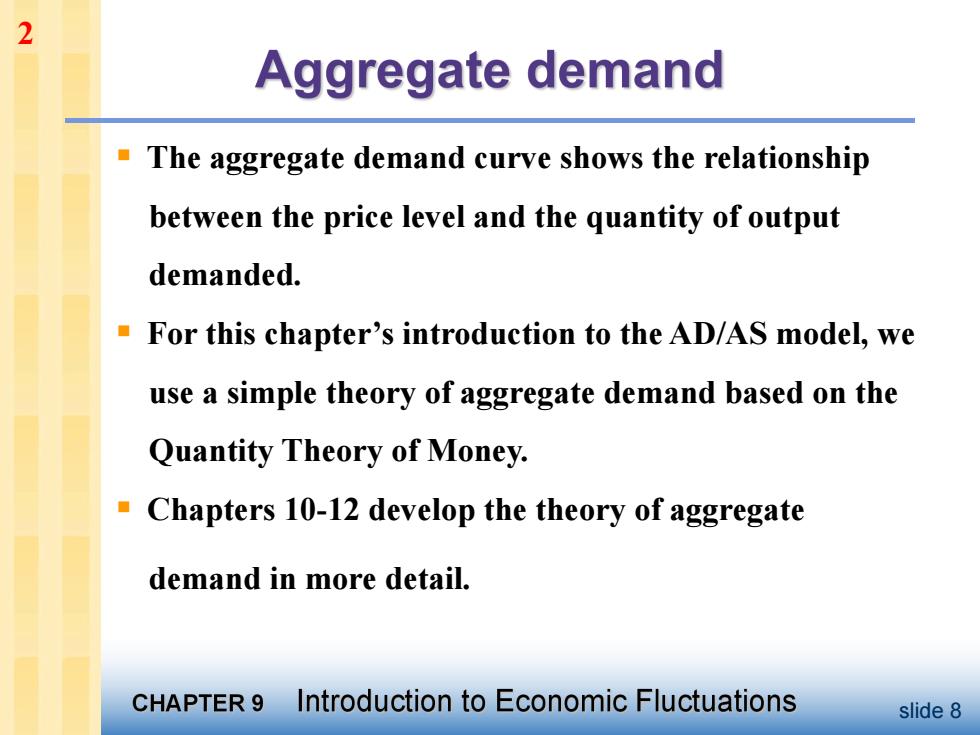
2 Aggregate demand The aggregate demand curve shows the relationship between the price level and the quantity of output demanded. For this chapter's introduction to the AD/AS model,we use a simple theory of aggregate demand based on the Quantity Theory of Money. Chapters 10-12 develop the theory of aggregate demand in more detail. CHAPTER 9 Introduction to Economic Fluctuations slide 8
slide 8 § The aggregate demand curve shows the relationship between the price level and the quantity of output demanded. § For this chapter’s introduction to the AD/AS model, we use a simple theory of aggregate demand based on the Quantity Theory of Money. § Chapters 10-12 develop the theory of aggregate demand in more detail. 2
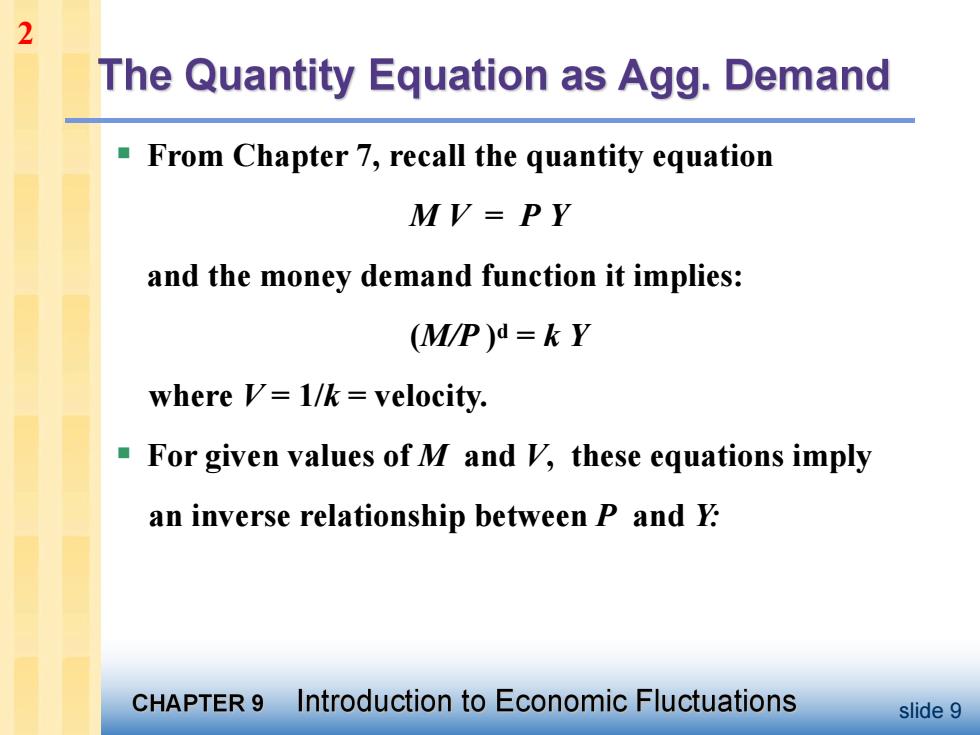
2 The Quantity Equation as Agg.Demand ■ From Chapter 7,recall the quantity equation MV=PY and the money demand function it implies: (M/P)d=k Y where V=1/k=velocity. For given values of M and V,these equations imply an inverse relationship between P and Y CHAPTER 9 Introduction to Economic Fluctuations slide 9
slide 9 § From Chapter 7, recall the quantity equation M V = P Y and the money demand function it implies: (M/P )d = k Y where V = 1/k = velocity. § For given values of M and V, these equations imply an inverse relationship between P and Y: 2